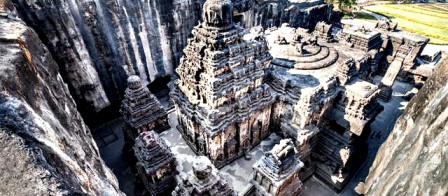Mauryan Empire – History Study Stuff & Notes
After the invasion by Alexander, the northwestern region in India faced various foreign invasions, leading to unrest in these Indian states. The Nandas were ruled at that time, but they did not become popular due to the severe tax imposed on agriculture by Dhanananda. Situations like these gave other officials an opportunity to take over the rule.
It was one of the greatest empires in the history of India. The rule of the Mauryas lasted from 322 - 185 BC, the majority of India was united as a single kingdom by the great founder Emperor Chandragupta Maurya. Chandragupta Maurya, with the help of Kautilya or Chanakya, laid the foundation of this empire.
After Chandragupta, his son Bindusara ruled almost the entire subcontinent and the Mauryan Empire had the most powerful army in ancient India. After Bindusara, Ashoka became the greatest emperor of the Maurya dynasty.
He was a skilled warrior and a qualified administrator. After the Kalinga war, Ashoka became a follower of Buddhism and spread it across the Indian subcontinent by sending missionaries.
Mauryan administration:
The book "Chanakya or Kautilya Arthasastra" describes the administration system of the Maurya Empire. The book has 15 sub-sections containing 180 chapters. This book provides the most important literary sources to know about Mauryan administration.
Central Government in Maurya Empire:
• The king had all sources of power and authority. He also had judicial and administrative power.
• The Mauryan administration was a greatly centralized system.
• The Council of Ministers was there to assist the king Council of ministers was known as 'Mantriparishad' and ministers were called 'mantri'. There was a 'Council of Ministers- adhyaksha' as the head of the council.
Kautilya's 'Arthashastra' mentions the duties of government superintendent (adhyaksha). These superintendents (adhyakshya) formed a secretariat, which was divided into several departments.
The departments and their superintendents are mentioned below:
Intelligence:
• In Mauryan administration the espionage system was developed and well spread.
• According to Arthashastra, there were two types of spies, the first being ‘Sansthana’ (Stable) and the second ‘Sanchari’ (Wanderers).
• These spies served as an eye and ear for the king, these people telling the king well about the whereabouts of the state's bureaucracy.
• In the Mauryan administration, spies were known as 'Gudhapurusha'.
• These agents included people from different sections of society, such as householders, traders, ascetics, disciples, etc.
• There were also special agents who acted as poison girls, called ‘Vishkanyas'.
Army:
• The commander-in-chief was the greatest officer of the Mauryan army after the king. he was known as 'senapati'.
• The commander (senapati) was appointed by the king.
• In the Mauryan army, salaries were paid in cash.
• Mauryan army consisted of six lakh infantry, about 30,000 cavalry, nine thousand war elephants, eight thousand chariots.
• The Maurya War Council was divided into six sub-councils, which prepared policies for five parts of the army - infantry, cavalry, elephant forces, chariots,and navy.
• The Mauryans made many changes in the area of the Navy, Transport and Supply Wing.
Transport:
• Transportation was handled by a separate department of road.The department separately determined the width of cattle tracks, chariots and pedestrians.
• There were also trunk roads managed by the Roads Department.
• Facilities were built on the roads for the passengers like trees were planted on both sides of the road, inns or restroom were made for the people traveling near the roads, taking care of wells and canals to provide drinking water to the passengers Went.
Department of Revenue:
• The head of the revenue department was known as ‘Samharta’, they were all in charge of revenue collection.
• Revenue was collected by the department of revenue from land, irrigation, customs, shop tax, boat tax, forests, mines and pastures, license fees from artisans and fines collected in law courts.
• The value of land revenue was fixed at one-sixth of the yield.
• Most of this revenue was used for expenses related to the king, army, government employees, relief of the poor, public works etc.
Agriculture:
• The head of the Department of Agriculture was known as 'Sitadhyaksha'.
• At that time there was also a separate irrigation department which looked after the network of canals. These canals provided water for irrigation as per the requirements of the land.
If you want us to add any more details to this article, please do let us know in the comments below.









1 Comments
Thanks again sir
ReplyDelete